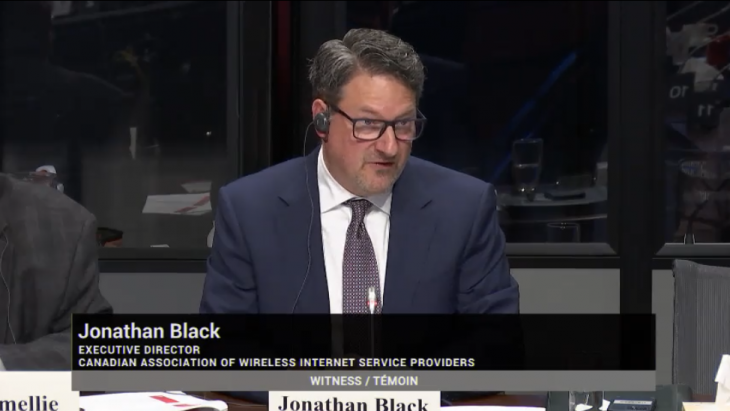
By Ahmad Hathout
OTTAWA – Executives from a fixed wireless association said at a Senate transport committee hearing yesterday evening that a bill that would place definitive terms on the use of spectrum is inflexible and would not bring about the objectives it seeks to accomplish.
The Senate bill, an amendment to the Radiocommunications Act, would force providers to deploy the public resource to at least 50% of the population within the region it serves inside of three years. The committee had heard from Innovation Canada officials the day before that the bill is both too strict for the realities of spectrum and also too lax relative to the current framework under which the department operates.
While the Canadian Association of Wireless Internet Service Providers (CanWISP) said it appreciates the intent of the bill, executives from the industry organization that represents fixed-wireless providers echoed ISED concerns that the “one-size-fits-all” approach does not take into consideration both spectrum’s limitations and the potential areas that could be missed if providers have to meet just 50% of the population within the region.
The bill is restrictive for some spectrum frequencies that have short communications reach, which would make reaching that percentage of the population difficult, said CanWISP executive director Jonathan Black. On the flip side, providers who have spectrum in a larger area can easily meet the population target without having to serve the surrounding area because the bulk of the density is concentrated in a certain locality, he added.
The association proposes that the Senate look into requiring ISED to investigate how the providers are using the spectrum at the third year after it has been licensed. If they are using it or have a plan to, then the department can extend their license to milestones of five and seven years to deploy. If they are not using it and don’t have a plan, ISED should revoke it.
CanWISP executive and small telecom owner Neil Smellie pitched a requirement that address the tier overlap phenomenon. For the purposes of licensing spectrum, ISED divides the country into lots or tiers – from one to five. Tier 1 is the largest area that covers the country and tier 5 constitute smaller but more service areas. The tier overlap is when, for example, a tier 5 area sits inside of a tier 4 area. ISED has only relatively recently introduced the idea of auctioning spectrum in tier 5 and is planning on doing so for 654 of those service areas in the upcoming 3.8 GHz spectrum auction in October.
Because none of CanWISP’s members have spectrum at the tier 4 size, the executives have proposed that there could be a mechanism to force a provider that has won spectrum in a tier 4 area but doesn’t want or have a business case to build out to those smaller areas to sublicense the spectrum to another provider. Conversely, the rule could force the larger player to build to those areas, CanWISP said. Providers are currently not required to, but do voluntarily on occasion, sublicensing their spectrum to another provider.
ISED officials were challenged by committee members the day before about how frequently it revokes spectrum. Officials could not recall when spectrum was revoked within five years of its issuance, suggesting it doesn’t happen often – if at all. They said the department has revoked three licences since 2015.
The department officials also expressed concern about the bill requiring ISED to initiative an auction on revoked spectrum within 60 days of taking the licences back. Black also said the timeline is way too short because there are many things that the providers must get together to consider bidding, including financing.



